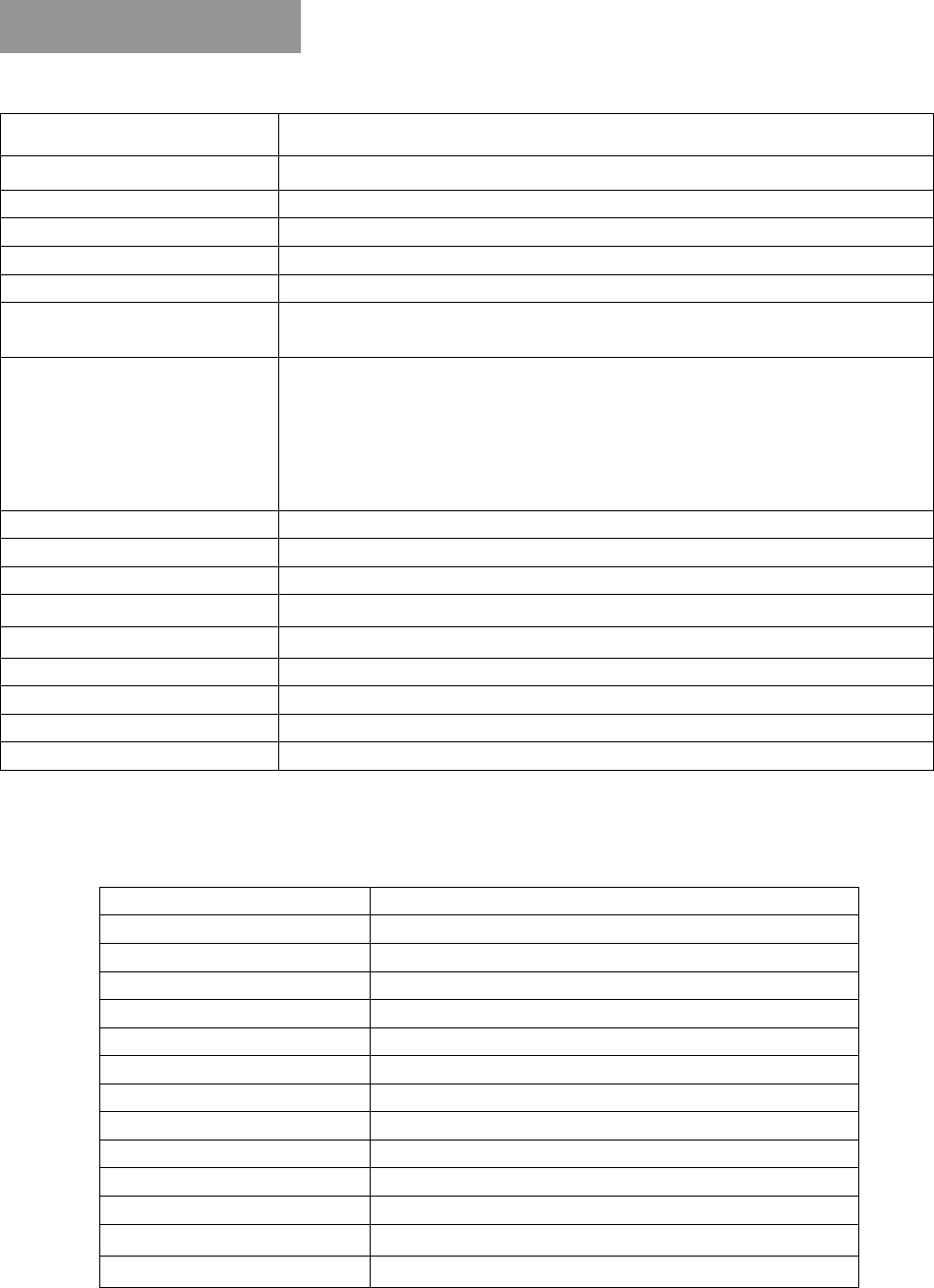Brother WLS5060B-D250 Wireless module User Manual
Brother Industries, Ltd. Wireless module
Brother >
Contents
- 1. User manual
- 2. 05 User Manual
User manual

THE FOLLOWING APPLIES IN THE U.S.A. AND CANADA
This device complies with Part 15 of FCC Rules and RSS-Gen of IC Rules.
Operation is subject to the following two conditions:
(1) This device may not cause harmful interference, and (2) this device must accept
any interference received, including interference that may cause undesired operation
of this device.
This transmitter must not be co-located or operated in conjunction with any other
antenna or transmitter.
This product is restricted to indoor use due to its operation in the 5.15 to 5.25
GHz frequency range.
FCC and IC require this product to be used indoors for the frequency range 5.15 to
5.25 GHz to reduce the potential for harmful interference to co-channel Mobile
Satellite systems. High power radars are allocated as primary users of the 5.25 to
5.35 GHz and 5.65 to 5.85 GHz bands. These radar stations can cause interference with
and/or damage this product.
The available scientific evidence does not show that any health problems are
associated with using low power wireless devices.
There is no proof, however, that these low power wireless devices are absolutely safe.
Low power Wireless devices emit low levels of radio frequency energy (RF) in the
microwave range while being used.
Whereas high levels of RF can produce health effects (by heating tissue), exposure
to low-level RF that does not produce heating effects causes no known adverse health
effects.
Many studies of low-level RF exposures have not found any biological effects. Some
studies have suggested that some biological effects might occur, but such findings
have not been confirmed by additional research.
Wireless LAN adaptor has been tested and found to comply with FCC/IC radiation exposure
limits set forth for an uncontrolled equipment and meets the FCC radio frequency (RF)
Exposure Guidelines in Supplement C to OET65 and RSS-102 of the IC radio frequency
(RF) Exposure rules.
ENGLISH

THE FOLLOWING APPLIES ONLY IN THE U.S.A.
Federal Communication Commission Interference Statement:
This equipment has been tested and found to comply with the limits for a Class B digital device,
pursuant to Part 15 of the FCC Rules. These limits are designed to provide reasonable
protection against harmful interference in a residential installation. This equipment generates,
uses and can radiate radio frequency energy and, if not installed and used in accordance with
the instructions, may cause harmful interference to radio communications. However, there is no
guarantee that interference will not occur in a particular installation. If this equipment does
cause harmful interference to radio or television reception, which can be determined by turning
the equipment off and on, the user is encouraged to try to correct the interference by one or more
of the following measures:
Reorient or relocate the receiving antenna.
Increase the separation between the equipment and receiver.
Connect the equipment into an outlet on a circuit different from that to which the receiver is
connected.
Consult the dealer or an experienced host product technician for help.
This device complies with Part 15 of the FCC Rules.
Operation is subject to the following two conditions: (1) This device may not cause harmful
interference, and (2) this device must accept any interference received, including interference
that may cause undesired operation.
15.21
You are cautioned that changes or modifications not expressly approved by the part responsible
for compliance could void the user’s authority to operate the equipment.
THE FOLLOWING APPLIES ONLY IN CANADA.
This Class B digital apparatus complies with Canadian ICES-003.
Product Identification Marking is located on the top of the Wireless Module.
This device is restricted to indoor use when operated in the 5.15 to 5.25 GHz frequency range.

Federal Communication Commission (FCC) /IC Radiation Exposure Statement
This EUT is compliance with SAR for general population/uncontrolled exposure limits in
ANSI/IEEE C95.1-1999/ IC RSS-102 and had been tested in accordance with the measurement
methods and procedures specified in OET Bulletin 65 Supplement C/ IEEE 1528. This
equipment should be installed and operated with minimum distance 20cm between the radiator &
your body.
This Class [B] digital apparatus complies with Canadian ICES-003.
Cet appareil numérique de la classe [B] est conforme à la norme NMB-003 du Canada.
FCC
End Product Labeling:
The final end product must be labeled in a visible area with the following: “Contains FCC ID: xxxxxx”
This device is intended only for OEM integrators under the following conditions:
1) The antenna must be installed such that 20 cm is maintained between the antenna and users, and 2) The
transmitter module may not be co-located with any other transmitter or antenna. As long as 2 conditions
above are met, further transmitter test will not be required. However, the OEM integrator is still responsible
for testing their end-product for any additional compliance requirements required with this module installed.
Manual Information To the End User
The OEM integrator has to be aware not to provide information to the end user regarding how to install or
remove this RF module in the user’s manual of the end product which integrates this module. The end user
manual shall include all required regulatory information/warning as show in this manual.
IC
End Product Labeling:
The final end product must be labeled in a visible area with the following: “Contains IC: xxxxx-xxxxx”
This radio transmitter has been approved by Industry Canada to operate with the antenna types listed
below with the maximum permissible gain indicated.
Antenna types not included in this list, having a gain greater than the maximum gain indicated for that type,
are strictly prohibited for use with this device.
Antenna Type: PIFA Antenna
Peak Gain: 1.11dBi (2.4GHz) / 3.46dBi (5GHz)
Déclaration d'exposition aux radiations:
Cet équipement est conforme aux limites d'exposition aux rayonnements IC établies
pour un environnement non contrôlé. Cet équipement doit être installé et utilisé avec
un minimum de 20 cm de distance entre la source de rayonnement et votre corps.
Déclaration d'exposition aux radiations:
Cet équipement est conforme aux limites d'exposition aux rayonnements IC établies
pour un environnement non contrôlé. Cet équipement doit être installé et utilisé avec
un minimum de 20 cm de distance entre la source de rayonnement et votre corps.
Cet appareil est conçu uniquement pour les intégrateurs OEM dans les conditions
suivantes: (Pour utilisation de dispositif module)
1) L'antenne doit être installée de telle sorte qu'une distance de 20 cm est respectée
entre l'antenne et les utilisateurs, et
2) Le module émetteur peut ne pas être coïmplanté avec un autre émetteur ou antenne.
Plaque signalétique du produit final
Ce module émetteur est autorisé uniquement pour une utilisation dans un dispositif où
l'antenne peut être installée de telle sorte qu'une distance de 20cm peut être maintenue
entre l'antenne et les utilisateurs. Le produit final doit être étiqueté dans un endroit
visible avec l'inscription suivante: "Contient des IC: 1353A-WLS5060B-D250".
Manuel d'information à l'utilisateur final
L'intégrateur OEM doit être conscient de ne pas fournir des informations à l'utilisateur
final quant à la façon d'installer ou de supprimer ce module RF dans le manuel de
l'utilisateur du produit final qui intègre ce module.
Le manuel de l'utilisateur final doit inclure toutes les informations réglementaires
requises et avertissements comme indiqué dans ce manuel.
Avertissement:
Le guide d’utilisation des dispositifs pour réseaux locaux doit inclure des instructions
précises sur les restrictions susmentionnées, notamment :
(i) les dispositifs fonctionnant dans la bande 5150-5250 MHz sont réservés uniquement
pour une utilisation à l’intérieur afin de réduire les risques de brouillage préjudiciable
aux systèmes de satellites mobiles utilisant les mêmes canaux;
(ii) le gain maximal d'antenne permis pour les dispositifs utilisant les bandes de
5250 à 5 350 MHz et de 5470 à 5725 MHz doit être conforme à la limite de la
p.i.r.e;
(iii) le gain maximal d'antenne permis (pour les dispositifs utilisant la bande de
5 725 à 5 850 MHz) doit être conforme à la limite de la p.i.r.e. spécifiée pour
l'exploitation point à point et l’exploitation non point à point, selon le cas;
(iv) les pires angles d’inclinaison nécessaires pour rester conforme à l’exigence de la p.i.r.e.
applicable au masque d’élévation, et énoncée à la section 6.2.2 3), doivent être clairement
indiqués.
(v) De plus, les utilisateurs devraient aussi être avisés que les utilisateurs de radars de
haute puissance sont désignés utilisateurs principaux (c.-à-d., qu’ils ont la priorité) pour
les bandes 5250-5350 MHz et 5650-5850 MHz et que ces radars pourraient causer du
brouillage et/ou des dommages aux dispositifs LAN-EL.

NCC
802.11b/802.11g/BT 警語:
第十二條→經型式認證合格之低功率射頻電機,非經許可,公司,商號或使用者均不得擅自變更頻
率、加大功率或變更原設計之特性及功能。
第十四條→低功
率
射頻電機之使用
不
得影響飛航安全及干擾合法通信;經發現有干擾現象時,應
立
即停用,並改善至無干擾時方得繼續使用。
前項合法通信,指依電信法規定作業之無線電通信。 低功
率
射頻電機須忍受合法通信或工業、科
學及醫
療
用電波
輻
射性電機設備之干擾。
802.11a 警語:
在 5.25-5.35 秭赫頻帶
內
操作之無線資訊傳輸設備,限於室
內
使用。 (4.7.5)
無線資訊傳輸設備忍受合法通信之干擾且
不
得干擾合法通信;如造成干擾,應
立
即停用,俟無干擾
之虞,始得繼續使用。 (4.7.6)
無線資訊傳設備的製造廠商應確保頻
率
穩定性,如依製造廠商使用手冊上所述正常操作,發射的信
號應維持於操作頻帶中。(4.7.7)
依LP0002 第4.7 節規定型式認證之 UNII 器材(含具第 4.7 節功能之手機或平版電腦),均應於使
用手冊或說明書標示第 4.7.9.1 節規定警語「應避免影響附近雷達系統之操作」
UNII 產品不具備外接或替換天線時,得不標示第 4.7.9.2 節警語「高增益指向性天線只得應用於
固定式點對點系統」,其餘之 UNII 器材應於使用手冊或說明書標示該警語。
本模組於取得認證後將依規定於模組本體標示審驗合格標籤。
系統廠商應於平台上標示「本產品內含射頻模組: XXXyyyLPDzzzz-x (NCC ID)」字樣。

Be aware of the following limits before using the Wireless Module.
●To use the Wireless Module, an access point needs to be obtained.
●Do not use the Wireless Module to connect to any wireless network (SSID∗) for which you do not
have usage rights. Such networks may be listed as a result of searches. However, using them may be
regarded as illegal access.
∗SSID is a name for identifying a particular wireless network for transmission.
●Do not subject the Wireless Module to high temperatures, direct sunlight or moisture.
●Do not bend, or subject the Wireless Module to strong impacts.
●Do not disassemble or alter the Wireless Module in any way.
●Do not attempt to install the Wireless Module in any incompatible device.
●Do not remove the Wireless Module from the host product during operations.
●Data transmitted and received over radio waves may be intercepted and monitored.
●To avoid malfunctions caused by radio wave interface, keep the host product away from the
devices such as other wireless LAN devices, microwaves and the devices that use 2.4 GHz and 5
GHz signals when using the Wireless Module.
●When noises occur due to the static electricity, etc., the host product might stop operating for the
protection of the devices. In this case, turn the host prodcut Off with Mains power On / Off switch,
then turn it On again.
●Depending on the area, this Wireless Module may not be available.
Caution

Confirm the encryption key, settings and positions of your access point before
starting setup. For details, read the manual of the access point.
(1) connect the Wireless LAN Adaptor to the USB port.
(2) Select the connection type and set.
Connection Type
WPS(Push button)
WPS(PIN)
Search for access point
Manual
(3-1) WPS(Push botton)
Press the WPS button on the access point until the light flashes.
And then, press the OK button.
(3-2) WPS(PIN)
Select your desired access point.
Enter the PIN code to the access point, and then select.
(3-3) Search for access point
Access points found automatically are listed.
Select your desired access point.
Access the encryption key input mode.
Enter the encryption key of the access point.
(3-4) Manual
You can setup SSID, authentication type, encryption type, and encryption key
manually. Follow the on screen instructions and set manually.
Setup the wireless LAN connection

WIFI Specifications
Host Interface Board to Board Connector
Form Facto
r
SDIO 2.0
Chipset BCM43455
Network Standar
d
IEEE 802.11a/b/g/n/ac
Security WEP,TKIP and AES hardware encryptio
n
Network Architectures Infrastructure
Modulation Technology CCK,DSSS,OFDM, BPSK, DQPSK, GFSK, DPSK, 64QAM
256QAM
Supported Data Rates IEEE 802.11 b : 1,2,5.5,11Mbps
IEEE 802.11a/g : 6,9,12,18,24,36,48,54 Mbps
IEEE P802.11n : MCS0-7 (HT20/40)
IEEE P802.11ac : MCS8 (VHT20,40,80)
IEEE P802.11ac : MCS9 (VHT40,80)
Frequency Range 2.412~2484 MHz , 5180~5825MHz
Antenna Type Printing Antenna
OS Compatibility Embedded Linux OS
Operation Temperature -30℃ ~ 85℃
Storage temperature -40℃ ~ 125℃
Storage humidity Less than 60%
Subvendor ID NA
Subsystem ID NA
Country code NA
BTSpecifications
Interfaces UART
Chipset BCM43455
Operatin
g
Volta
g
e 3.3V+/‐10%
Radio Transceiver 2.4GHz Unlicensed ISM Ban
d
Di
g
ital Modulator GFSK, Π/4 DQPSK, 8-DPS
K
Operatin
g
Frequencies 2.402GHz ~ 2.480GHZ,
Operatin
g
Channels 0 ~ 78
RF Output Power Under 9dbm
Power Class Class 1.5
Power Consumption Link mode
Data Rate Follow BCM43455 table on datasheet
Receiver sensitivit
y
-70dBm BER<0.1%
Operatin
g
temperature -30℃ ~ 85℃
Stora
g
e temperature -40℃ ~ 125℃
Specifications

Stora
g
e humidit
y
Less than 60%
Antenna t
y
pe Printing Antenna
VID/DID NA
*1 The frequency and channel differ depending on the country.
*2 802.11b/g/n CH1 ~ CH11 only use for North America, Canada, and Taiwan.
*3 Transfer rate are theoretical values; however, actual communication rate will vary
according to communication environment or connected equipment.